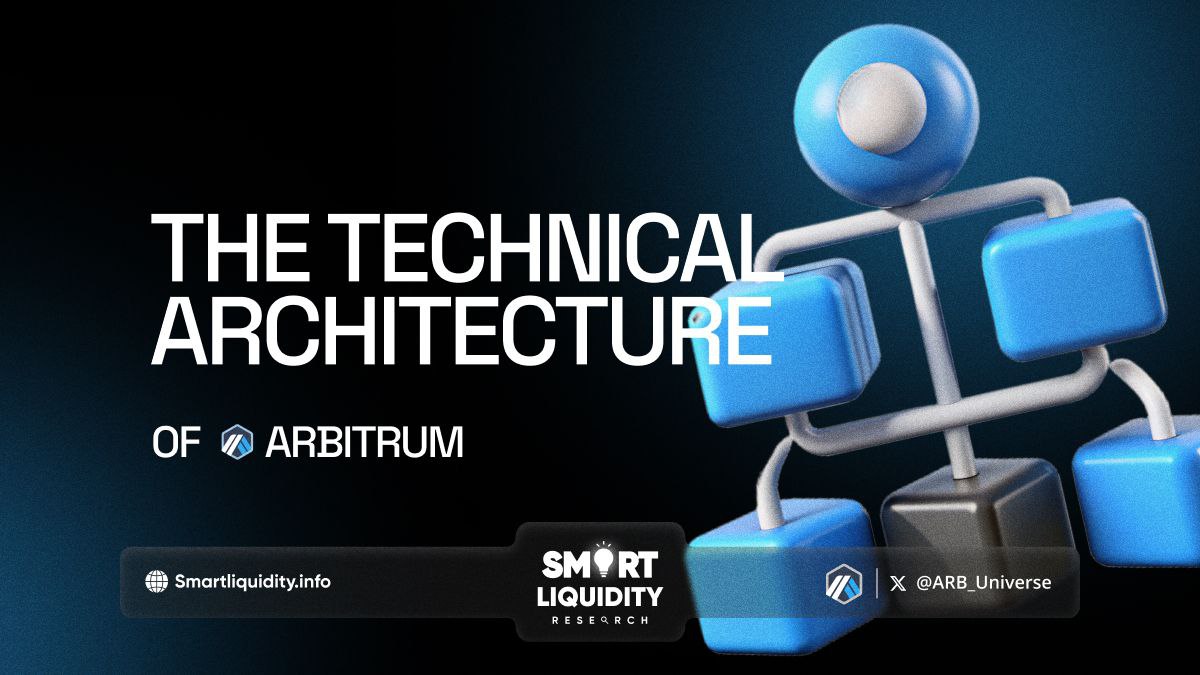The Technical Architecture of Arbitrum


Introduction
In the ever-evolving landscape of blockchain technology, scalability and efficiency are paramount. Arbitrum, a layer 2 scaling solution for Ethereum, has emerged as a leader in this space, promising faster transactions and lower fees without compromising on security. This article delves into the technical architecture of Arbitrum, exploring its core components and how they work together to achieve these goals.
Arbitrum is a layer 2 solution designed to enhance the Ethereum network’s scalability by offloading a significant portion of transaction processing from the main Ethereum chain. By doing so, it reduces congestion and improves transaction speeds, making Ethereum more efficient and user-friendly.
Key Components of Arbitrum
- Rollups
At the heart of Arbitrum’s architecture are Rollups. Rollups batch multiple transactions together and submit them as a single transaction to the Ethereum mainnet. This approach significantly reduces the amount of data that needs to be processed and stored on-chain, leading to faster and cheaper transactions. - ArbOS (Arbitrum Operating System)
ArbOS is the operating system that runs on Arbitrum nodes. It manages the execution of smart contracts, handles transaction processing, and ensures the system’s overall efficiency. ArbOS is designed to be compatible with Ethereum, meaning developers can deploy their existing Ethereum smart contracts on Arbitrum with minimal modifications. - Validators and Sequencers
Validators and sequencers play a crucial role in maintaining the integrity and performance of the Arbitrum network. Validators are responsible for verifying the correctness of transactions, while sequencers order transactions and create Rollups. This division of labor ensures that transactions are processed quickly and accurately. - Fraud Proofs
To maintain trust and security, Arbitrum employs a fraud-proof mechanism. If a validator submits an incorrect transaction, other validators can challenge it by providing a fraud-proof. This system ensures that only valid transactions are finalized, and malicious actors are penalized. - The Arbitrum Bridge
The Arbitrum Bridge allows users to transfer assets between the Ethereum mainnet and the Arbitrum network. It acts as a gateway, enabling seamless interoperability and liquidity transfer between the two networks. The bridge ensures that assets retain their value and utility regardless of which network they are on.
Benefits of Arbitrum
- Scalability
Arbitrum significantly enhances Ethereum’s scalability by reducing the load on the mainnet. This results in faster transaction processing and lower fees, making it more feasible for developers to build and deploy decentralized applications (dApps). - Compatibility
Arbitrum is fully compatible with Ethereum, meaning developers can use existing tools and frameworks to build on Arbitrum. This reduces the learning curve and facilitates easy migration of dApps from Ethereum to Arbitrum. - Security
By utilizing Ethereum’s robust security model and implementing fraud proofs, Arbitrum ensures that transactions are secure and reliable. Users can trust that their assets and data are protected. - Cost-Efficiency
Lower transaction fees are one of the most attractive features of Arbitrum. By minimizing on-chain data storage and processing, Arbitrum reduces costs for users and developers, making it a cost-effective solution for blockchain applications.
In Summary
Arbitrum’s innovative technical architecture offers a promising solution to the scalability challenges faced by Ethereum. With its rollups, ArbOS, validators, sequencers, fraud proofs, and the Arbitrum Bridge, it provides a robust and efficient platform for decentralized applications. As blockchain technology continues to grow, solutions like Arbitrum will play a critical role in shaping the future of decentralized ecosystems.




